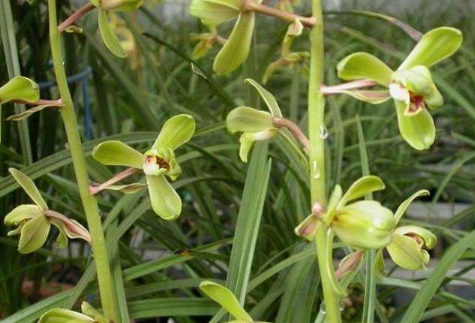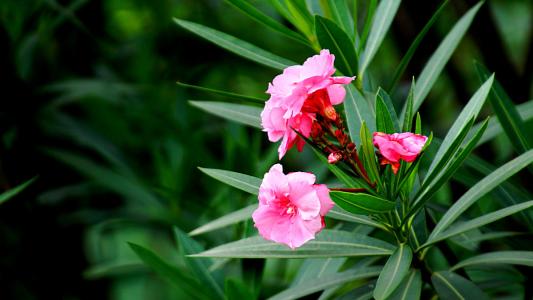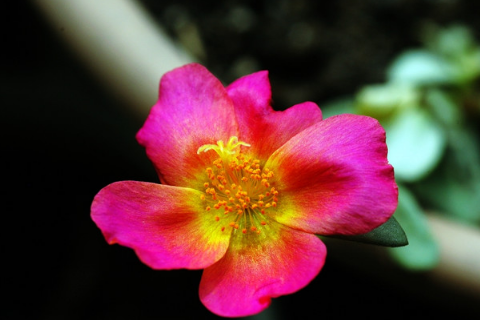Culture method of cymbidium
1. Soil
The best soil for Cymbidium is fertile and loose rotten soil, which is rich in nutrients and conducive to root growth.

two。 Light
Cymbidium is the most light-loving orchid, which can adapt to strong light, but it still needs shading in summer and more light in other seasons.
3. Moisture content
Cymbidium is the most drought-tolerant orchid, but its false bulb is small and needs to keep the soil moist. It can only withstand short-term drought.
4. Fertilizer
The pseudobulb of Cymbidium is not obvious and needs a lot of fertilizer. Fertilization can focus on the use of phosphorus and potassium fertilizer to promote plant growth and make the leaves more green.
Culture methods of Cymbidium
The flowers of Cymbidium are huge, with yellow, white, green, red, pink and complex colors and other colors, bright colors, colorful, neat flowers and strong texture, long-lasting, luxurious and elegant orchids, is a rising star in orchids, the market prospect is bright. So how to cultivate high-quality Cymbidium?
Cymbidium is usually propagated by plant division. The ramet time is longer than that after flowering and before the new bud grows, this short dormancy period takes place. It should be properly dried before ramet and operated when the roots are slightly whitish and soft. Those with strong growth usually split once in 2-3 years, and each clump of orchid seedlings should have 2-3 pseudobulbs, one of which must be newly formed in the previous year. To avoid wound infection, you can apply sulfur powder or carbon powder. Put it in a dry place for 1-2 days and then plant it separately, that is, it will become a new plant. After planting, it should not be watered immediately. It is found that if it is too dry, a small amount of water can be sprayed to the leaf surface and basin surface to prevent the leaf from drying up, falling off and the false bulb from shrinking seriously. Wait for the new bud base to produce new roots before watering.
Cymbidium likes strong light. Cymbidium is native to tropical and subtropical plateaus of Asia, and likes cool and humid environment. The suitable temperature for growth is 10-25 ℃. It should be kept in a low-temperature greenhouse in winter. It grows well when it is about 10 ℃ at night. The flower stem elongates normally and blossoms in February-March. When the winter temperature is lower than 5 ℃, the leaf is slightly yellow, the florescence is delayed, and the flower stem is short. However, when the overwintering temperature was about 15 ℃, the leaves were green and shiny, and the flowering was advanced to January-February to supply the Spring Festival market. Very like wet, but should pay attention to ventilation, otherwise easy to get anthracnose, seedling humidity should be 80% to 90%, medium and large seedlings should be 60% to 85%. The flower diameter is soft and must be supported by a pillar to keep it upright.
Fertilization: the ratio of nitrogen, phosphorus and potassium in the growing period was 1:1:1, the ratio in the flowering stage was 1:2:2 to 3, and the pH value of the fertilizer solution was 5.86.2. Generally speaking, the fertilization concentration is 3500 to 4000 times for small seedlings, 2000 to 3500 times for medium and large seedlings, 1 to 2 times per day in summer (alternating application of water and fertilizer), and fertilizer is usually applied once every three days in other seasons. Organic fertilizer: organic fertilizer should be applied once a month from the bottle of tissue culture seedlings to before flowering, the ratio of bean cake to bone meal in the growing period is 2:1, and pure bone powder should be applied in the florescence. Organic fertilizer cannot be applied to the root. If the salt content of bone meal is too high, it can be washed with water first and then applied. You'd better stop applying organic fertilizer in winter.
Watering: sprinkler irrigation is usually used in production, once a day in May and September, twice a day from July to August, and every 2 to 3 days from October to April of the following year. The watering times should be adjusted at any time according to the size of seedlings and weather conditions.
Flowering plant culture: (three years) the night temperature from March to June in spring is 15 ℃ to 20 ℃, and the daily temperature is 23 ℃ to 25 ℃. The night temperature from June to October is 15 ℃ to 20 ℃, and the daily temperature is 20 ℃ to 25 ℃. After November, the night temperature is 10 ℃ to 15 ℃, and the daily temperature is 20 ℃. 10 g / pot of organic fertilizer was applied per month from February to April (bean cake: 2:1 of bone powder), and 14 g / pot of organic fertilizer was applied after April. Increase the temperature difference from June to October, flat land growers generally go up the mountain for cultivation, where bone powder is mainly applied, about 15 grams per pot, immediately stop organic fertilizer after flower buds appear, flower ears form after November, and all new buds are erased after flower arrows are determined. flower buds can be seen in most varieties from September to the end of October, and leaf buds should be stripped if they grow. The flower arrow uses 5 mm diameter foreskin wire as a pillar and stands up when the flower bud grows to 15 cm. The lowest part of the binding arrow is 10 cm, with an interval of 6 to 8 cm, and the pillar is generally 80 cm and 100 cm long.
Key points of cut flower cultivation techniques: variety selection, cut flower varieties should be selected for cultivation. Go up the mountain to promote the flower: the cultivation technique of the cut flower is the same as that of the potted plant when it blossoms for the first time, go up the mountain in June to promote the flower, and cut the flower when it is open. The plant leaves 2 buds after flowering in order to blossom in the coming year, and will not go up the mountain again. The flowering period of this plant is later than that of the uphill, and the result is equivalent to prolonging the flowering period.
Cut flower harvest: inflorescence opening 2030% is the suitable harvest time, stored in 2-5 ℃ cold storage. The cut flowers are packed in soft paper and transported in cartons. The vase life can reach more than 30 days.
In order to cultivate high-quality Cymbidium, it does take a lot of efforts.
Culture methods of Cymbidium
According to the characteristics of Cymbidium, its culture method can be roughly summarized into six aspects: breathable material, containing fertilizer, turning basin less, suitable for deep species, seeing more sun and suitable for ventilation.
Material breathable
If the cymbidium wants to have a good root, its plant material is the key point. now most of the orchids are granular plants, and the problems of ventilation and drainage can basically be well solved, but for the cymbidium, it is even more important to emphasize that the blue plant is thicker than other orchids. Please follow the following steps to make the formula:
① Immortal soil 60%, Goldstone 20%, Burning soil (Maifan Stone can also be used to protect and upgrade art grass) 10%, Snake (willow bark) 10%
② Friends of Orchid plants 80%, Xiandu 20%.
Fertilizer content
The pseudobulb of Cymbidium is not obvious, and its growth basically depends on the absorption of nutrients in the plant, the root diameter and length of the root, the height of grass and so on. The leaves of Cymbidium are strong and thick, so the application of phosphorus and potassium fertilizer should be emphasized in the process of fertilization.
Turn the basin less
It is best not to turn the basin after the middle and lower parts of Huilan. The leaves of Cymbidium sometimes come out two or three years later, indicating that the growth cycle of Cymbidium is relatively long. It often takes several years or even as long as 4-5 years to see flowers in order to make Cymbidium grow in pots, grow roots, increase seedlings and grow. Less turning the pot means that the cymbidium should be strengthened and strengthened in a stable growing environment. Through the time, it can be proved that the re-serving basin of Cymbidium is strengthened, and the seedling rate is considerable in two or three years.
Suitable depth species
From the false bulb of Cymbidium is not obvious, the root of Cymbidium is thick and long, suitable for deep species, should be large pot. The false bulb of Cymbidium is not obvious. in order to enhance and strengthen the orchid seedlings, we should choose a larger orchid pot according to the condition of the grass to meet the growth of the orchid root.
See Yang more often
According to the theory that the veins of the leaves of Cymbidium are transparent and can accept short-term strong light, Cymbidium should see more sunlight. Throughout the year, only summer according to the weather conditions appropriate shade, the other three seasons can be open to accept the sun, but if the burning tip or the old grass falling phenomenon is the light is too strong, it is necessary to increase shading efforts.
Suitable ventilation
From the fact that the original cymbidium is mostly in the mountainous area with high altitude, it objectively requires good ventilation and a certain temperature difference, so the cultivation of Huilan should pay more attention to the importance of ventilation than other orchids. The leaves of Cymbidium are tightly bundled, leathery and less fleshy, and they have relatively low requirements for air humidity, drought resistance and waterlogging resistance, so they are more suitable for balcony cultivation. Balcony windows should be fully opened in spring, summer and autumn to increase the air replacement capacity.
- Prev

Conservation measures and precautions of oleander
1, pruning often pruning oleander can not only maintain the beauty of the plant shape, but also promote the growth of oleander, flowers more beautiful. 2. The root system of oleander is relatively developed. If it is not managed, it will affect the growth of oleander. Therefore, the root of oleander should be thinned.
- Next

How to raise the dance of falling flowers
Water the soil once a week in spring and autumn to keep the soil moist. It should be properly shaded in summer, keep the soil moist moderately in winter, and the specific watering times depend on the level of room temperature. Fertilize once a month, choose low nitrogen fertilizer or succulent special fertilizer. Light flowering period to ensure sufficient light, move as little as possible, so as not to break the stem and fall flowers.
Related
- Fuxing push coffee new agricultural production and marketing class: lack of small-scale processing plants
- Jujube rice field leisure farm deep ploughing Yilan for five years to create a space for organic food and play
- Nongyu Farm-A trial of organic papaya for brave women with advanced technology
- Four points for attention in the prevention and control of diseases and insect pests of edible fungi
- How to add nutrient solution to Edible Fungi
- Is there any good way to control edible fungus mites?
- Open Inoculation Technology of Edible Fungi
- Is there any clever way to use fertilizer for edible fungus in winter?
- What agents are used to kill the pathogens of edible fungi in the mushroom shed?
- Rapid drying of Edible Fungi

